Long before Sailor Jerry was a popular rum brand and Ed Hardy became ubiquitous with gaudy rhinestone-encrusted trucker caps, the two names were revered by tattoo artists and enthusiasts alike for not only facilitating and expanding tattooing as a true art form, but for helping to define the culture.
Christian Audigier, the designer known for licensing Hardy’s name and art for clothing and accessories in the ’90s (and for marketing it to celebrities as a precursor to the influencer-driven promo-whoring of today) passed away in 2003, but before that, Hardy settled a lawsuit with the Frenchman that gave the artist control of his images and how they are used via the clothing brand. In his 2014 memoir, Wear Your Dreams: My Life in Tattoos, Hardy shared that Audigier’s obsession with celebrity led to the brand’s image problem, while the lawsuit itself alleged questionable business dealings concerning under-reporting of profits. The Hardy brand still exists, but thankfully it’s a lot more streamlined and un-blingy these days. This coupled with fans who know the artist’s important history (and younger generations who missed the Jon Gosselin and Paris Hilton Ed Hardy fashion days) means that Hardy’s legacy remains intact. With a current retrospective at the de Young Museum in San Francisco and accompanying Rizzoli book that came out this summer, the 72-year-old “godfather of tattoo,” as he’s called, has found himself in a rightful position of respect and recognition once again.
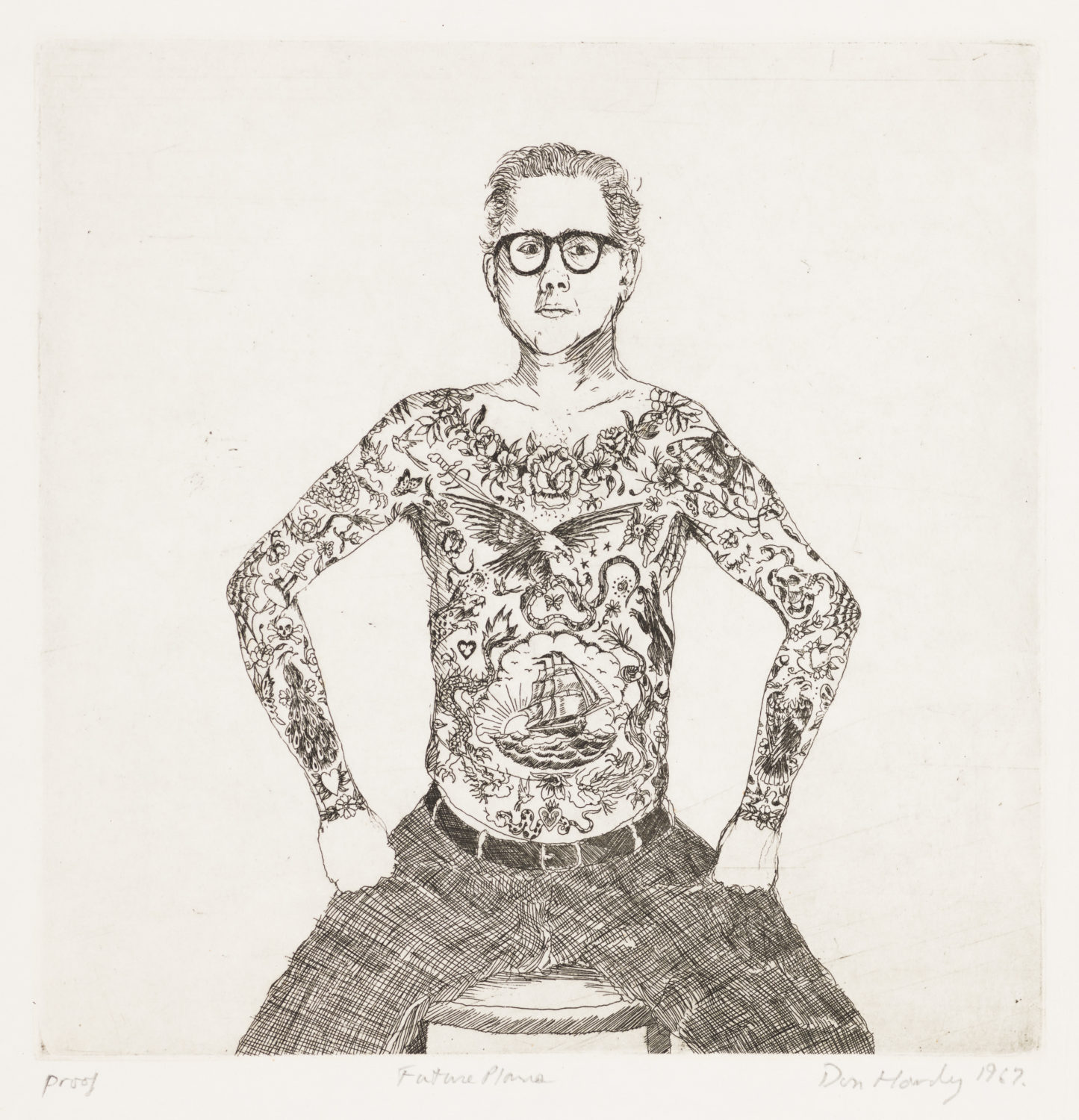
Courtesy Fine Arts Museums of San Francisco / (c) Ed Hardy Deeper Than Skin, Rizzoli New York, 2019
L.A. Leaves Its Mark
While he is best known as a San Fransisco figure, “Don” Ed Hardy was in fact a product of Southern California — born in Newport Beach and part of a community that included SoCal legends such as “Good Time” Charlie Cartwright, Jack Rudy, “Tennessee” Dave James, Mark Mahoney and Freddy Negrete, to name some key players.
In terms of early tattoo culture and its proliferation, Southern California played an undeniably formative role thanks to the aforementioned figures in the ’70s, and with the exception of James who passed away several years ago (his brother Greg, formerly of Sunset Strip Tattoo and now proprietor of his own Sherman Oaks shop, Tattoos Deluxe, has a similarly reputable standing), all are still alive and still tattooing. Mahoney in particular tends to be the man most point to as the old school favorite in L.A., especially as the style he helped pioneer, single-needle “black-and-gray” is currently more popular than ever — the desired aesthetic for portraits of loved ones, landscapes, scripts and traditional iconography.
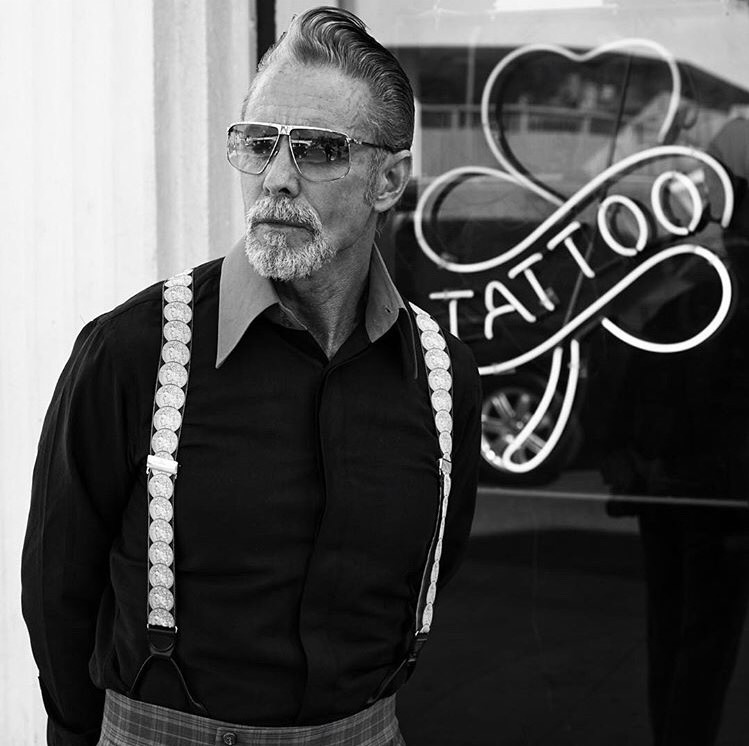
(Courtesy Mark Mahoney)
Originally from Boston, Mahoney is also unique in that he has remained on top consistently, the artist of choice for multiple generations of rockstars, actors, athletes and other high-profile clients. He got his start at the legendary Long Beach Harbor-adjacent spot known as the Pike (he lived in the back of a shop there) but he’s equally as well-known for his own thriving Shamrock Social Club, which will mark 20 years on the Sunset Strip, in the space across the street from the Rainbow, next year.
“It was all still carnies and bikers and sailors,” Mahoney tells me of his days at the Pike, which drew him to the West Coast in the late ’70s/early ’80s. During the 1950s, the locale was home to American traditional-style masters such as Lee Roy Minugh, Bob Shaw, Lyle Tuttle and Bert Grimm, whose ’50s shop Expert Tattoo changed over and is now helmed by one of the top female tattooists in the world, Kari Barba and her Outer Limits Tattoo- making it the longest continuously operating tattoo shop in the United States and the second oldest shop in the world. With memorabilia and photographs on its walls, it’s like a museum of local tattoo lore as well as a great place to get solid work.
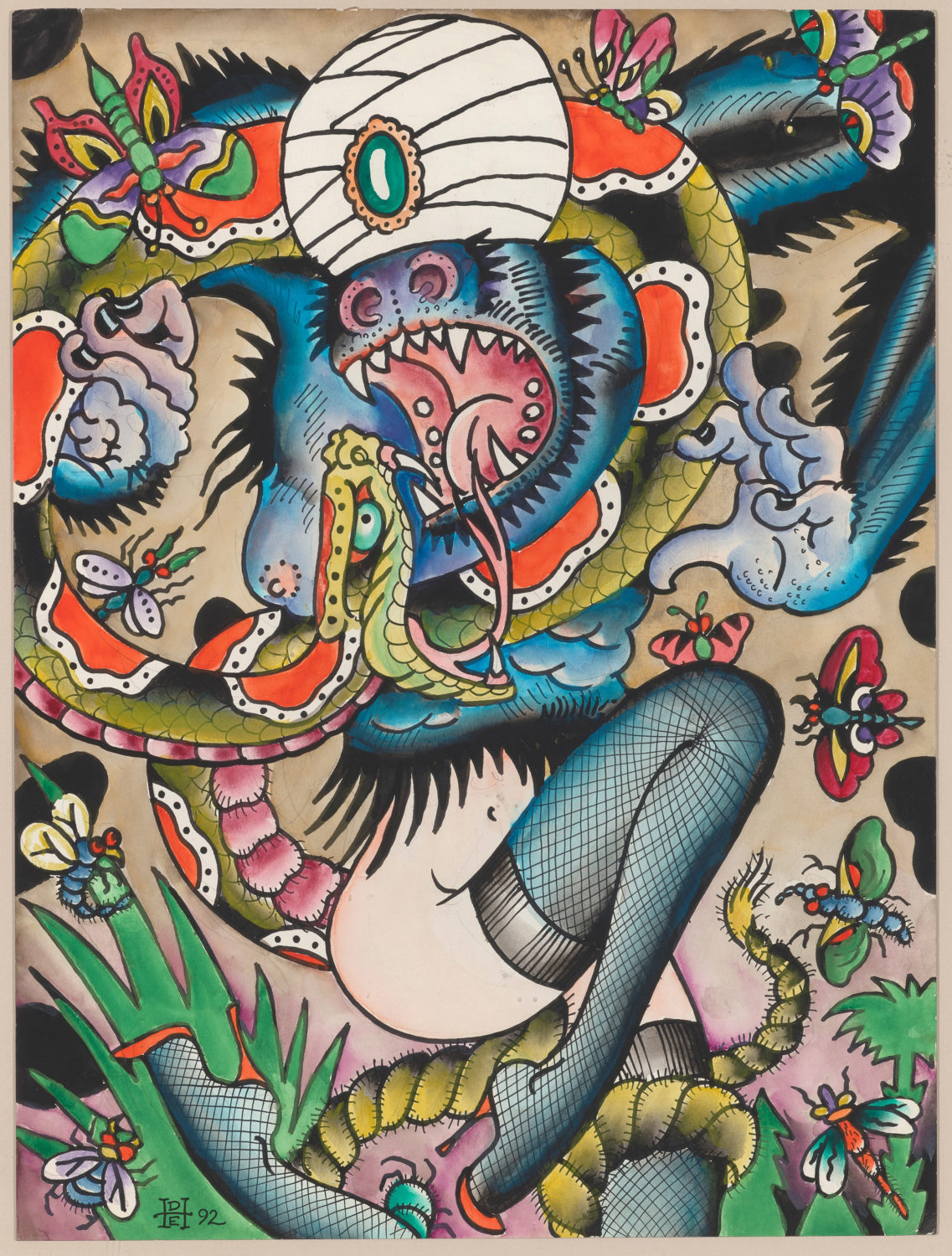
(Courtesy Fine Arts Museums of San Francisco / (c) Ed Hardy Deeper Than Skin, Rizzoli New York, 2019)
In the comprehensive documentary Tattoo Nation, currently available on Amazon Prime, the history of the Pike and traditional flash is covered extensively, as is the contrasting style that Mahoney and Negrete (who also currently calls Shamrock home) are known for. With its origins in the L.A. prison system explained and explored by the likes of Danny Trejo (who got his ink while doing time) and Negrete, the Chicano style’s significance in the barrio, the joint and beyond is given its much-deserved due.
The color and bold lines of traditional American and the fluidity of black-and-gray styles came together and elevated the art form in East L.A. on Whittier Blvd. when Cartwright opened a shop there, Good Time Charlie’s Tattooland, with Rudy as his top artist, offering both styles and touting a personalized, collaborative approach. After meeting Hardy at one of the first major tattoo conventions ever in Reno in 1977, Cartwright and Rudy developed a friendship with the now S.F.-based artist, as they each influenced the other in a myriad of ways. Hardy, who by this time had apprenticed in Japan and was known for his large colorful renditions of traditional Japanese back pieces, sleeves and suits was blown away by the delicate detail or artistic depth championed by the L.A. artists, whose stuff referenced prison work and pioneered photo-realism in tattoos.
“[Tattooland] is kind of considered like the church from where it all stems,” says Mahoney. “It was the first business to specialize in the style.”
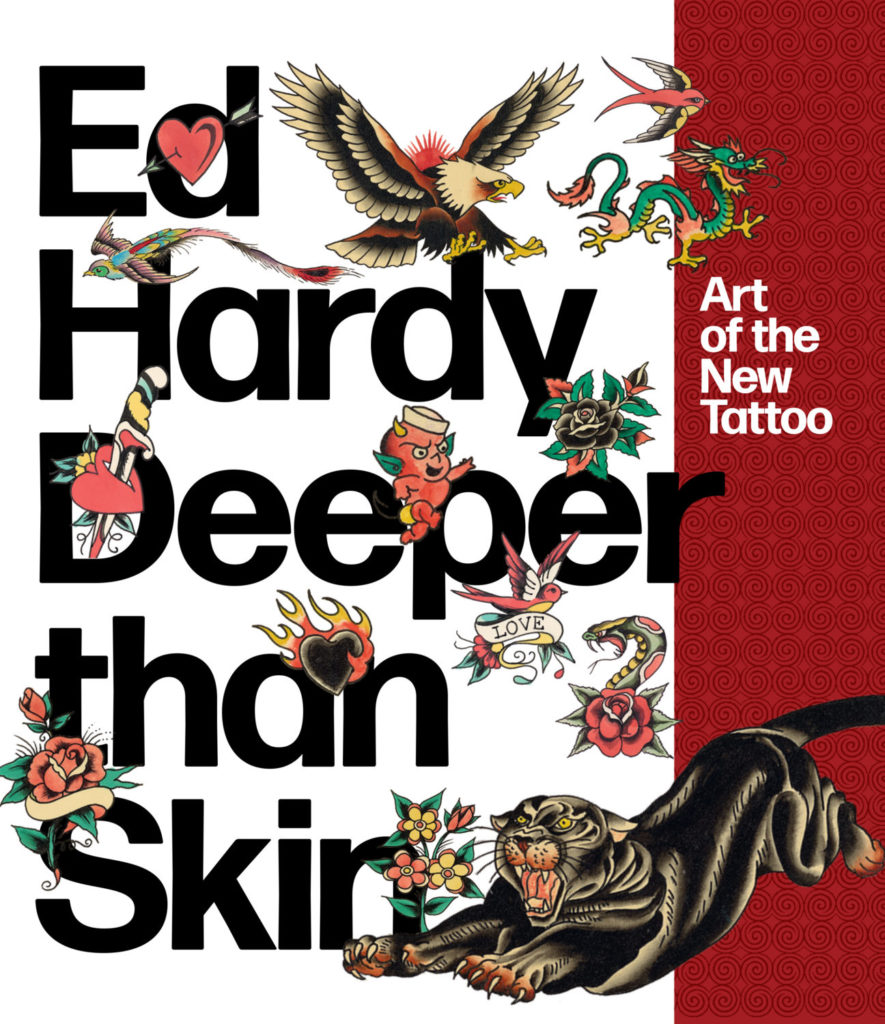
(Courtesy Fine Arts Museums of San Francisco / (c) Ed Hardy Deeper Than Skin, Rizzoli New York, 2019)
“It made us rethink what we were aware of, what would be interesting and challenging and beautiful and cool,” Hardy shares in the doc. He soon came down from Northern California to get tattooed in Whittier (and later owned Tattooland for a while before the original location closed; Rudy currently owns and runs the iconic shop and moved it to Anaheim). Other heavies in the tattoo world flocked there in its heyday as well. Bob Roberts, who’s been known for his landmark Spotlight Tattoo in L.A. for decades, was one of them; he says he was so blown away by how clean the single-needle technique looked he began to use it for everything, not limiting it to the classic cholo-looking pieces it was created for. Solidifying black-and-gray Chicano style’s significance on tattoo culture as a whole, Negrete and later Mahoney came on board at Tattooland too, and the rest is history — permanent history that lives and beautifies bodies in Los Angeles and around the globe to this day.
The Gun Grows Up
Even before Hardy’s current museum exhibit, the power of expression and artistic relevance of tattoo had been recognized not only by fine art institutions, but museums as well. Just a couple years ago, the L.A. Natural History Museum’s “Tattoo” exhibit sought to survey the works of many artists mentioned here and to connect the dots in terms of history and ideas behind the culture — from ancient and ritualistic modification practices to ID-ing (the Holocaust) to rebellious body adornment, beginning with military members in the ’50s, evolving into biker, punker and gangster contingents in the ’70s and ’80s, and ending with people from all walks of life today.
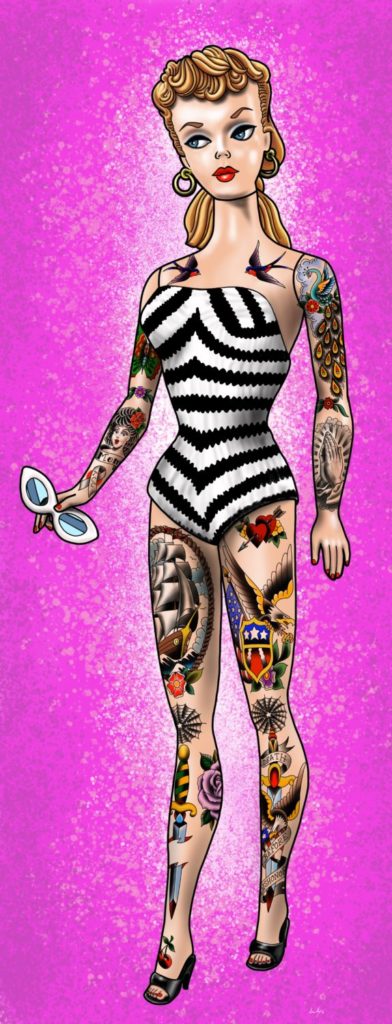
(Adam Guyot/Eternal Art Tattoo)
Indeed, having a tattoo or multiple tattoos in 2019 is practically the norm and the stigma is all but gone. A big part of this has to do with pop culture and how the art has been portrayed and worn by public figures. Mahoney has always been discreet, but word has gotten out regardless and it’s common knowledge that he’s worked on the likes of Johnny Depp, David Beckham, Tupac Shakur and Cher, to name just a few. Because of this and Shamrock’s location, tourists and trendy requests abound. Mahoney’s OK with that.
“I think it’s great. You know, it’s cool to do different people — old people, young people,” the dapper pioneer tells me on a sunny afternoon at his bustling, buzzing landmark shop. “That’s something that’s interesting to me. One week I tattooed a guy in his eighties and two guys in their seventies. It’s become acceptable… maybe they watched some TV shows or something, but for whatever reason they finally felt comfortable doing it.”
Mahoney says the subversive nature of tattooing is what attracted him as a teen, and he admits the current popularity is a double-edged sword. “We’re grateful for the business and that all kinds of people are getting tattooed and it is a cool thing that everybody should experience,” he affirms. “You get that feeling of accomplishment and you learn about yourself, you know — it’s a really special process. So I’m glad everybody can do it, but I do miss the old days too.”
Though tattoos are now generally accepted in the workplace and by the mainstream at large, there are still ways to wear them that feel risky (face and hands for example, which most shops discourage, but artists will do at their own discretion). There are also emerging styles that take the art form in new directions — three-dimensional looking work, industrial and technology-driven designs, and muted pieces that look like water-color art. According to Mahoney, nature and wilderness scenes are a trend right now too. Tattoo patrons should always be wary of trends however, because when too many people get one thing, it inevitably becomes dated (tribal armbands and lower back tats aka “tramp stamps” come to mind).
For most, limbs and torsos will always provide fine flesh to spotlight one’s body art, while classic designs that reference either the vibrancy of traditional flash (roses, sparrows, pin-up girls) or the exquisite depth of black-and-gray (script, portraits, cars and landscapes) seem to never go out of style.
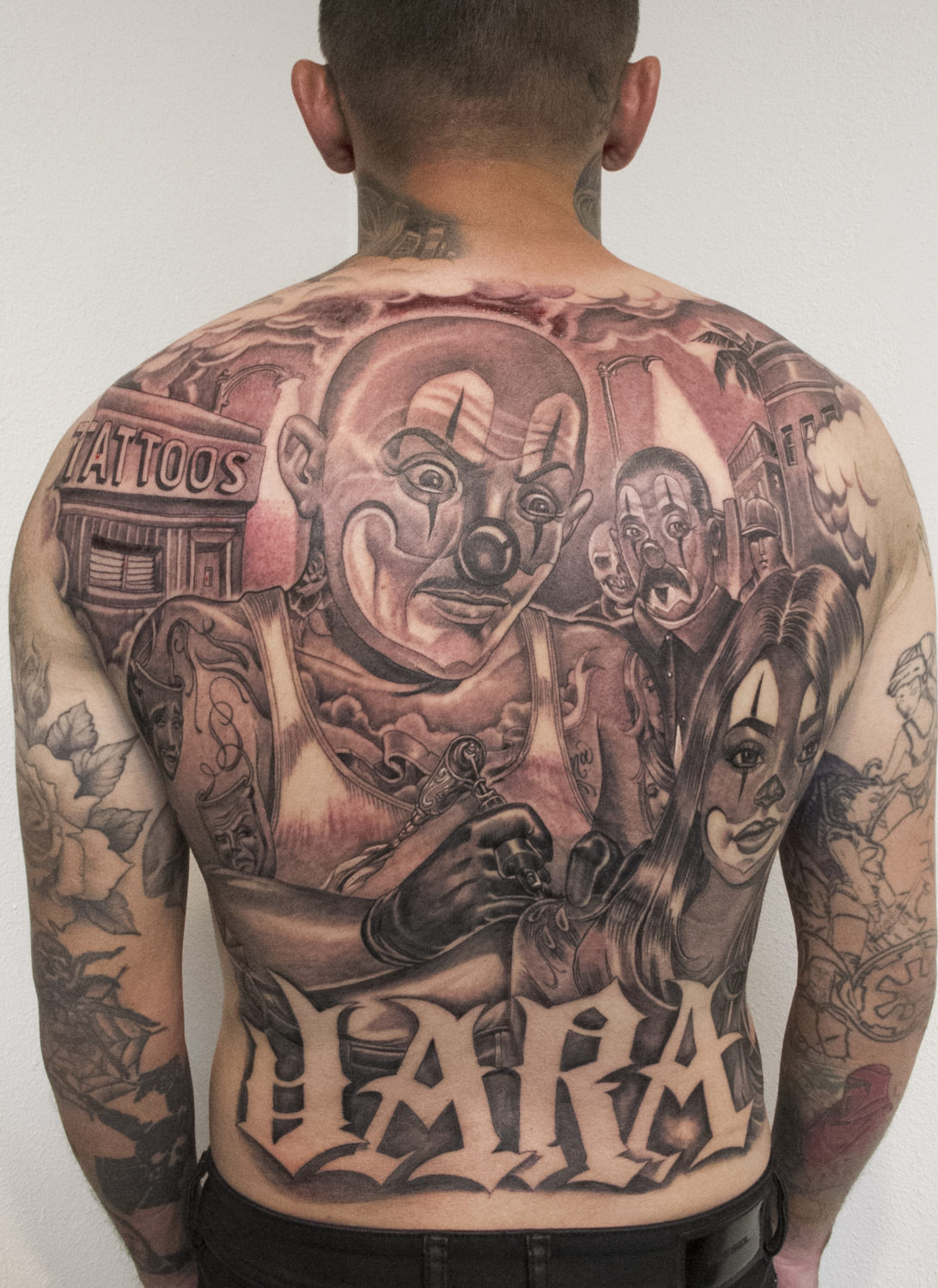
(Hunter for Mister Cartoon)
One current favorite of the latter genre, East L.A.’s Mister Cartoon has helped it continue to thrive and remain representation of Latino culture and struggle in Los Angeles, even if everyone might be doing it. By putting his own signature spin with clown imagery and alluring female forms, he incorporates emotion, whimsy and beauty found only in the barrio into his work.
“For me, tattoo culture in L.A. is unique because it’s an original style. It comes from a Chicano mind frame,” Cartoon, who has a by-appointment-only shop in Skid Row, tells L.A. Weekly. “Chicano art embraces the fine line script, it embraces the old English style lettering, it shows the romantic street fantasies. Chicano art is inspired by old school Chevys, classic soul music and the power of shaded portraits of family… the battle of good versus evil, all collaged into a flowing pattern of black-and-gray tattoo art.”
Drawing Attention
Cartoon has taken his art from skin to galleries to cars to products like vinyl toys and clothing. He says he is currently looking to bring it into the animation world as well, a move that makes sense given his moniker. And he isn’t the only star of the tattoo world to transcend the parlour scene. There are many and most are right here in L.A.
Kat Von D made a name for herself first via the reality show Miami Ink, and later with her own show L.A. Ink, which chronicled life at her shop High Voltage on La Brea Avenue. The show is long-gone but H.V. remains popular and Von D has taken the recognition she gained from TV to entrepreneurial heights, becoming a beauty mogul with a top-selling cosmetics line, and soon to launch a vegan shoe line.

Kat Von D in L.A. Weekly’s 2008 People Issue (Kevin Scanlon)
Though Hardy’s experience with Audigier might serve as a deterrent to some artists in taking the leap to fashion, the key seems to be maintaining creative control and working with brands who respect the artist’s vision. Mahoney will soon be releasing a limited edition line of wallets with British designer Paul Smith, and the collaboration makes perfect sense as both possess a badass dandy kind of aesthetic.
Of course, the quickest road to worldwide recognition for tattoo talents has not come from products, art exhibits or conventions but from television exposure like Von D received. With the success of the TLC Ink shows, several more have followed including reality programs that bring a soap opera-like quality to the lifestyle and contest formats, both of which many old school artists tend to frown upon. Becoming a top artist takes years of trial, error and hard work as an apprentice to a pro who imparts and educates what he/she knows about the craft. Shop life in general is about collaboration and sometimes sees a focused approach that doesn’t necessarily always involve a lot of chit chat. Tattoos hurt, often a lot, and some people just don’t want to talk while getting them. Neither of these truths make for good TV. Nevertheless shows including Bad Ink, Best Ink, Epic Ink, Inked, Tattoo Nightmares, Tattoo Titans, Black Ink Crew New York, Ink Master, Just Tattoo of Us, and Tattoo Fixers do well ratings-wise, so they aren’t going anywhere and they will continue to portray the culture for entertainment first and foremost.
The Buzz of Giving Back
One of the newest, most notable and toutable aspects of tattoo culture concerns its impact on the world. Charitable components abound, especially here. Von D for example, has been a huge proponent for animal rights and has used her platform to spread awareness and donated proceeds from her makeup sales to vegan causes. L.A. native Adam Vunoir and his collective Strangelove LA have hosted “LA Rose Days” gathering artists for $100 rose pieces with all the proceeds going to the Downtown Women’s Shelter and Food on Foot L.A., while another local artist, Julie Bolene at Thunderbird Tattoo has hosted “Flash Fundraisers” benefiting Planned Parenthood and hurricane victims.
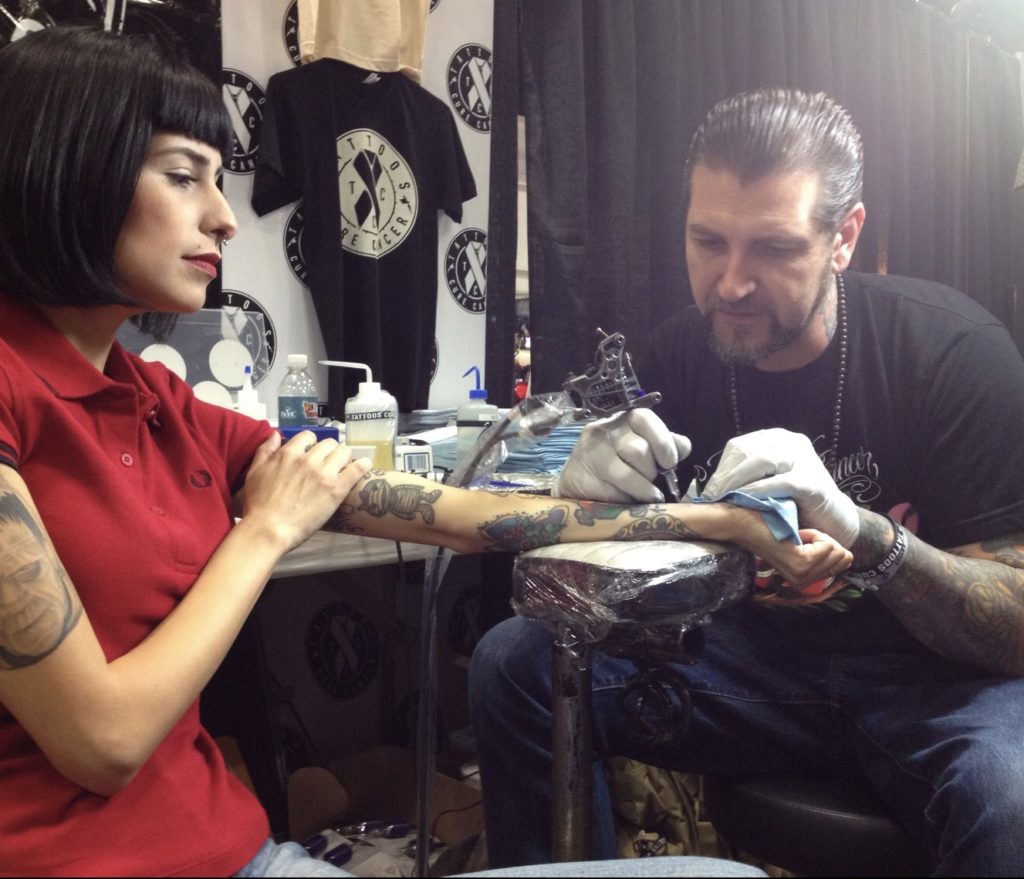
Courtesy Adam Guyot/Eternal Art Tattoo)
The most consistent and organized example of the tattoo community giving back may go to Adam Guyot, whose Santa Clarita shop, Eternal Art, has hosted “Tattoos Cure Cancer,” an annual event the artist created after he lost his father to lung cancer. “I had been involved in a few charity tattooing events for various causes but TCC just seems to touch something in artists that makes them want to be a part of it,” says Guyot who has flown in artists from all the country to participate and raised many thousands of dollars over the years for the cause in the process, offering flash and cancer ribbon designs at great prices. “It’s hard to find someone who hasn’t been affected by cancer in some way, shape or form, and with TCC we are able to use the art that we all love to be a part of something bigger than ourselves. The tattoo world today can be very competitive, but TCC breaks down the egos and attitudes and brings artists together for a common goal.”
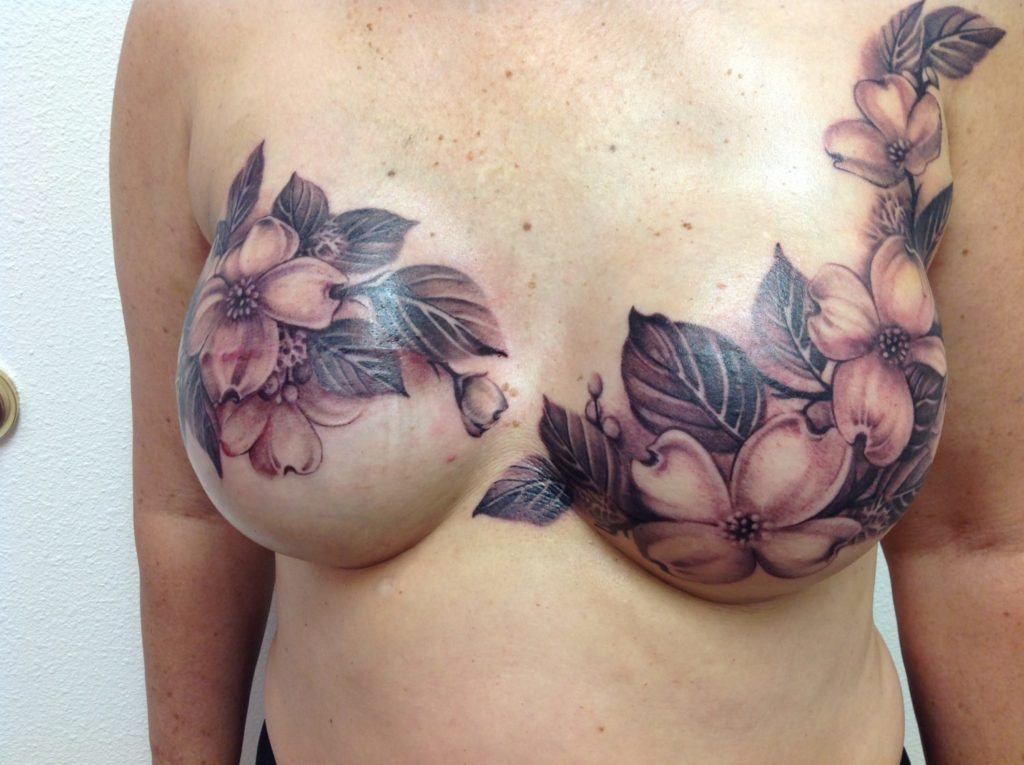
(Courtesy The Gilded Lily)
Fighting cancer as Guyout has set out to do by raising money for research and a cure is only part of the story. Many artists are also lending their skills to survivors providing paramedical body art. Holly Feneht at The Gilded Lily in Newhall for example, specializes in decorative nipple and areola tattoos for breast cancer survivors, and figurative scar cover-ups post-mastectomy and C-section, a service done with sensitivity and care that helps clients to heal in ways that go beyond skin deep. Way beyond.
“I think the times have changed so much with how tattooing is perceived in the last decade,” says Guyot. “But I definitely think any artist willing to donate their skills to any charity form raises all of us up in the eyes of the common people. “
Getting a tattoo today may not mean what it once did, but its permanence remains (laser treatments notwithstanding). It will always be a special life decision, even if some come to have regrets. It’s survived fashion trends, TV portrayals and changing tastes because its essence is rich with tradition, meaning and honor, especially in Southern California where living legends like Mahoney, Negrete, Roberts and Rudy are incredibly, still sharing their gifts.
For all of the old stereotypes about tattoos conveying recklessness or deviancy, over the last five-plus decades the culture has proven to be something else — an enduring art form that conveys love, respect, pride, beauty and, most importantly, commitment to these ideas for life.

There are so many great tattoo shops in L.A. we couldn’t list them all if we tried, but L.A. Weekly has made a couple lists of top shops and artists in the past: (2012) and (2015). We will be creating a new list for 2020! In the meantime, here are the businesses mentioned in this piece:
Shamrock Social Club– 9026 W. Sunset Blvd., West Hollywood; (310) 271-9664. shamrocksocialclub.com/
Goodtime Charlie’s Tattooland– 2641 W. Lincoln Ave, Anaheim; (714) 827-2071. instagram.com/tattooland/
Sunset Strip Tattoo– 7524 W Sunset Blvd., West Hollywood; (323) 874-4596. sunsetstriptattoo.com
Tattoos Deluxe– 4531 Van Nuys Blvd. Sherman Oaks; (818) 783-1323. tattoosdeluxe.com
Outer Limits Tattoo– 22 S Chestnut Pl, Long Beach; (562) 437-9121. outerlimitstattoo.com
Spotlight Tattoo- 5859 Melrose Ave. Hollywood. (323) 871-1084. spotlighttattoos.com
Mister Cartoon’s Tattoo Shop — Skid Row, downtown; address by appointment; mistercartoon.com.
High Voltage- 1259 N La Brea Ave., West Hollywood; (323) 969-9820. highvoltagetattoo.com
Thunderbird Tattoo- 1648 W. Temple St., Westlake; (213) 353-4654 . thunderbirdtattoola.com
Eternal Art Tattoo- 18760 Flying Tiger Dr., Santa Clarita; (661) 298-0897. eternalarttattoo.com
The Gilded Lily- 23550 Lyons Ave. Suite #103; Santa Clarita; (661) 523-8623. gildedlilydesign.com
Advertising disclosure: We may receive compensation for some of the links in our stories. Thank you for supporting LA Weekly and our advertisers.
